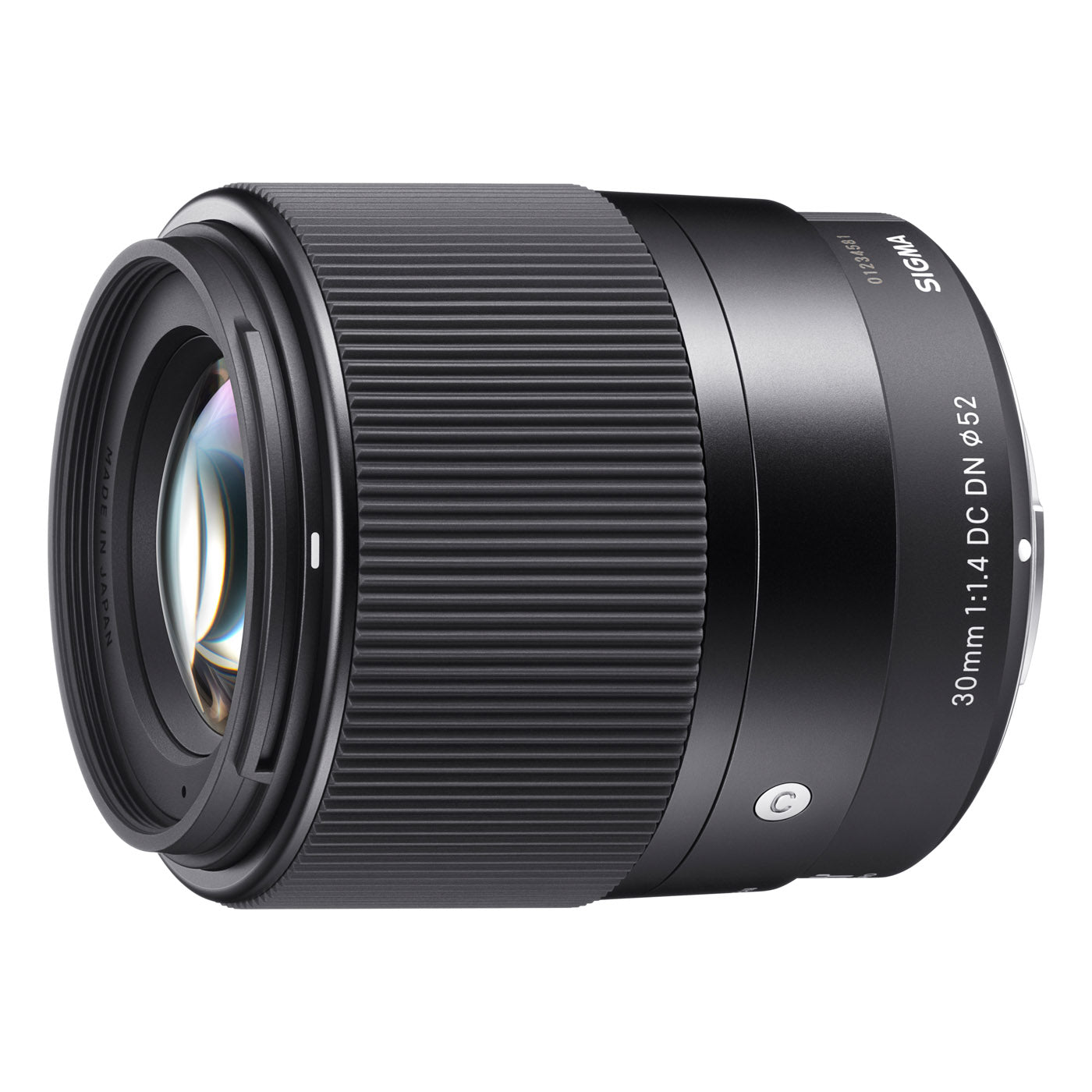What we think...
Product Description
Introducing the Sigma 30mm f1.4 DC DN Contemporary Lens
The definitive compact fast-aperture standard prime for mirrorless systems.
Powerful but portable
This high-performance crop-sensor prime delivers outstanding image quality and an ultra-wide F1.4 aperture in a very portable body. Weighing just 265g (L-Mount version), it’s one of the lightest F1.4 lenses on the market for mirrorless cameras, so is ideal for photographers who need both performance and portability from their kit. The 30mm F1.4 is ideal for street photography, portraits, weddings, travel and day-to-day shooting, and thanks to its fast AF is also perfect for video.

The wide F1.4 aperture delivers a shallow depth-of-field for blurry backgrounds, and it also makes it easier to achieve blur-free shots when working hand-held in low light. The lens is available in a range of mirrorless mounts including L-Mount, Sony E-mount, Canon EF-M, Micro Four Thirds and Nikon Z Mount. When used on an APS-C sensor camera, the lens offers an equivalent focal length of 45mm, and when used on Micro Four Thirds, it’s 60mm. The SIGMA 30mm F1.4 is part of a series of portable crop-sensor primes with an F1.4 maximum aperture.

Key Features
- APS-C Format
- 45mm (35mm Equivalent)
- Aperture Range: f/1.4 to f/16
- Two Aspherical Elements
- One High-Refractive Index Element
- Super Multi-Layer Coating
- Stepping Motor AF System
- Rounded 9-Blade Diaphragm

Experience Versatility with this Portable Standard Prime Lens
Discover the perfect companion for your day-to-day photography needs with our sharp and portable standard prime lens. Boasting an impressive F1.4 aperture, it stands out as one of the most versatile crop sensor primes available.

Robust Build and Exceptional Features
Crafted with Sigma's signature attention to quality, the 30mm F1.4 lens features a robust yet lightweight polymer construction, ensuring durability without compromising portability. The large, rubberised focus ring offers intuitive manual focusing, while a petal-type lens hood effectively controls flare, particularly in bright sunlight.
Furthermore, the durable brass mount, complemented by a rubber seal (excluding EF-M mount), effectively safeguards against dust and moisture intrusion.

Experience Unparalleled Image Quality
High-Performance Optics for Superior Results
Equipped with an advanced optical design comprising 9 elements in 7 groups, including 2 aspherical elements, 2 SLD elements, and 3 FLD elements, our 30mm F1.4 lens ensures razor-sharp images with rich colour rendition. Say goodbye to common optical issues such as chromatic aberration, flare, and vignetting, thanks to the meticulous engineering of this lens.
Chromatic aberration is meticulously controlled, even in high-contrast areas, while vignetting is minimal, even at wider apertures. Our lens features advanced coatings to minimize flare and ghosting, ensuring pristine image quality even in challenging lighting conditions.

Perfect for Street Photography
With a full-frame-equivalent focal length of 45mm, our 30mm F1.4 lens is perfectly suited for street and travel photography. Its compact and lightweight design, coupled with the impressive F1.4 aperture, makes it an indispensable tool for capturing stunning images in any environment. The shallow depth-of-field and smooth bokeh enhance subject isolation, allowing you to create captivating images with ease.

Unmatched Portability
Despite its exceptional performance, the 30mm F1.4 lens remains remarkably portable, comparable in size and weight to Sigma's 18-50mm F2.8 DG DN | C standard zoom lens. While lacking the versatility of a zoom lens, its faster F1.4 aperture enables superior light capture and depth-of-field control, making it an indispensable tool for any photographer.

Payment & Security
Your payment information is processed securely. We do not store credit card details nor have access to your credit card information.























